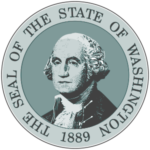This data shows the count and percentages of working educators in WA K-12 by educator role, race-ethnicity, and gender. For example, every year there is an increasing percentage of teacher of color. [Read more…] about Race-ethnicity and gender of working educators
Limited certificate use
School districts may also use limited teacher certificates to assign teachers to K-12 courses. This can be an indicator of the need for credentialed teachers, though there are also beneficial reasons a district may have teachers with limited certificates. [Read more…] about Limited certificate use
Updated toolkit provides new information on Paraeducator Certificate Program
The certificate program implementation toolkit has now been updated to reflect new district training requirements for the 2021-22 school year. Learn more.
May paraeducator certificate program newsletter
Learn about updates to the paraeducator certificate program, and May board meeting decisions. Read the newsletter.
First credential teacher counts by educator preparation program provider
First credential teacher completers are beginning teacher candidates who have finished their preparation program. They could be from either a traditional route program or one of Washington’s four alternative routes to teacher certification. [Read more…] about First credential teacher counts by educator preparation program provider
Professional Growth Plans (PGPs) completed per school year
Professional growth plans (PGPs) are job-embedded, self-directed professional development. This is the count of reported PGPs completed each school year. [Read more…] about Professional Growth Plans (PGPs) completed per school year
Paraeducator training continues with district reimbursements confirmed
The 2021 legislative session has ended and Washington’s two-year budget has been released. Among the many decisions made, the Paraeducator Certificate Program received the funds needed to continue supporting and strengthening the state’s paraeducator workforce. Learn more.
